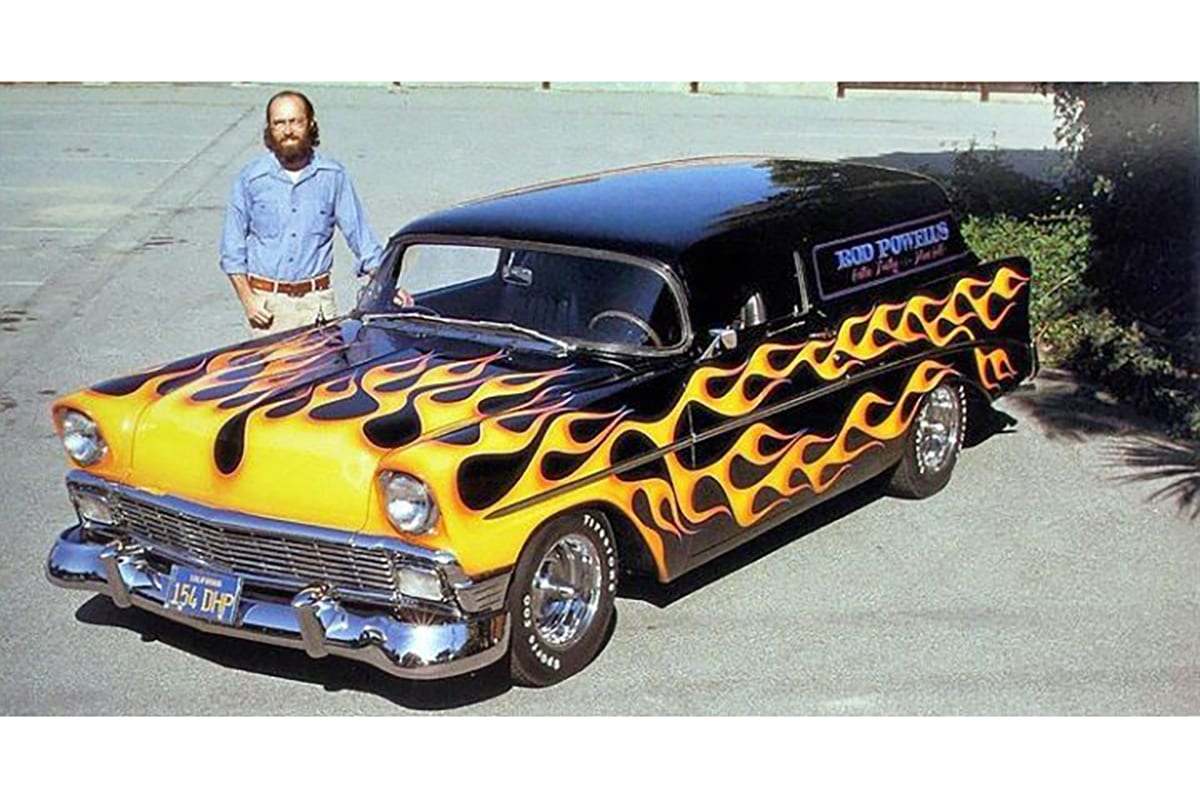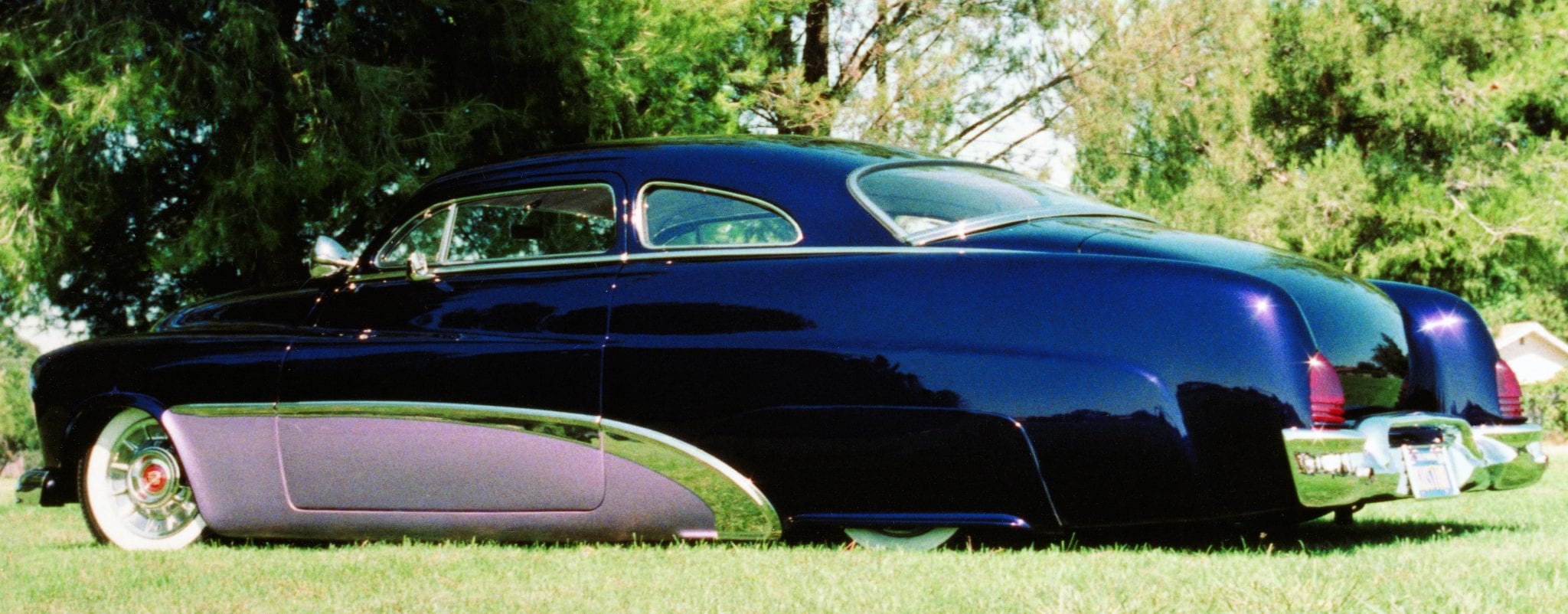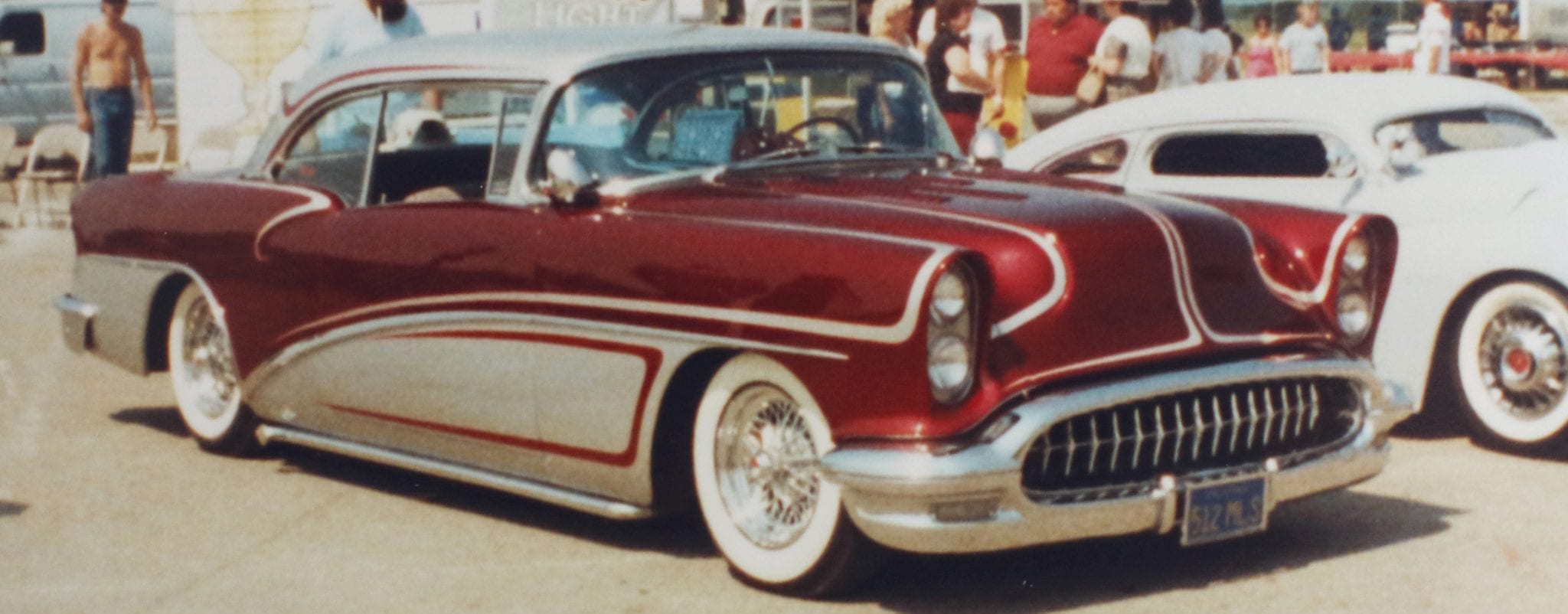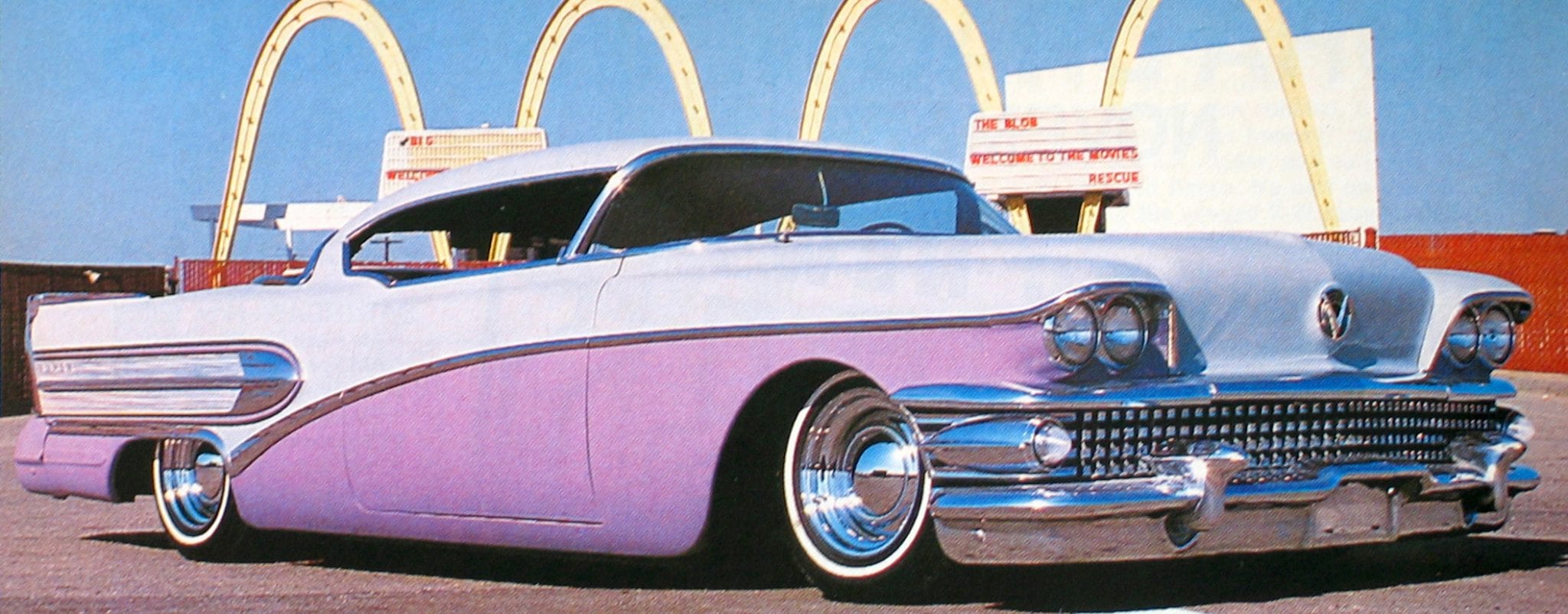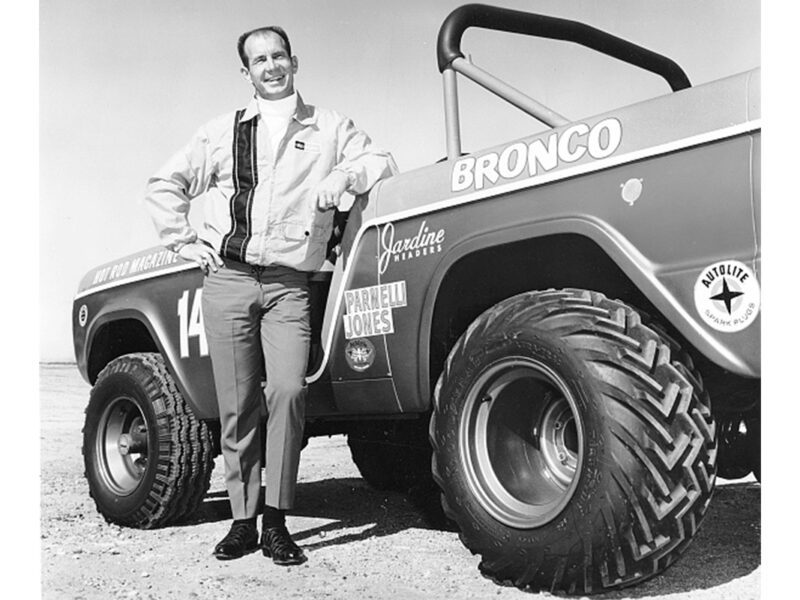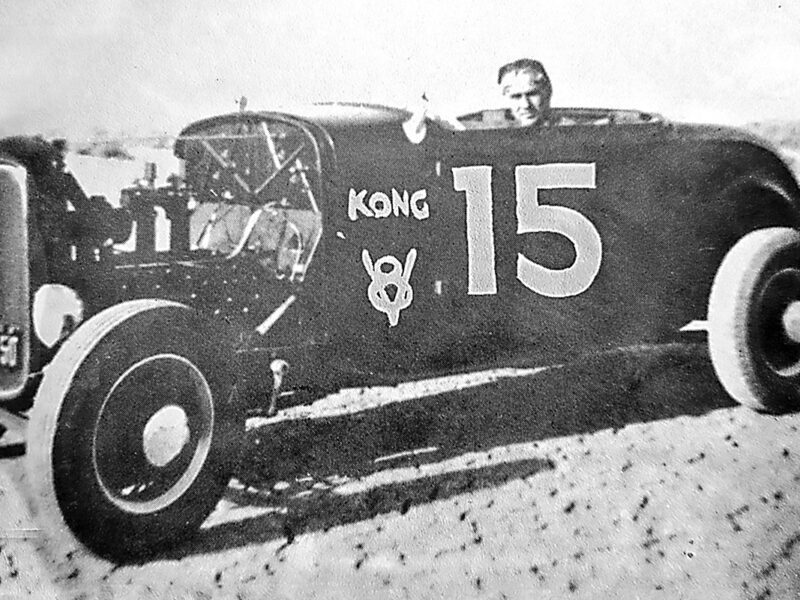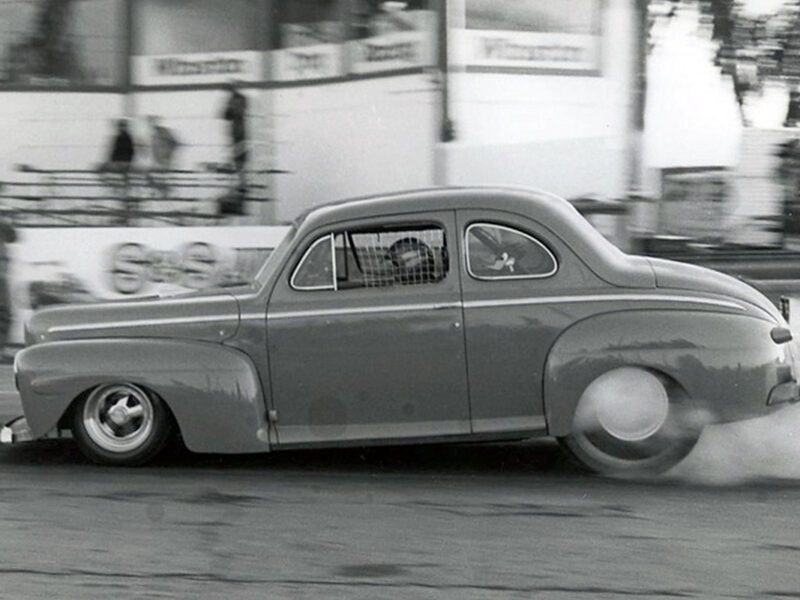Rod Powell – Keeper of the Flames
The history of rods and customs is dotted with legendary pinstripers and custom painters – Von Dutch, Dean Jeffries, Art Himsl, Larry Watson, to name a handful – who garnered widespread fame and publicity. Add Rod Powell to the list. While he kept a lower profile than the aforementioned masters of the sword brush, to those “in the know,” Powell’s work was equally sublime.
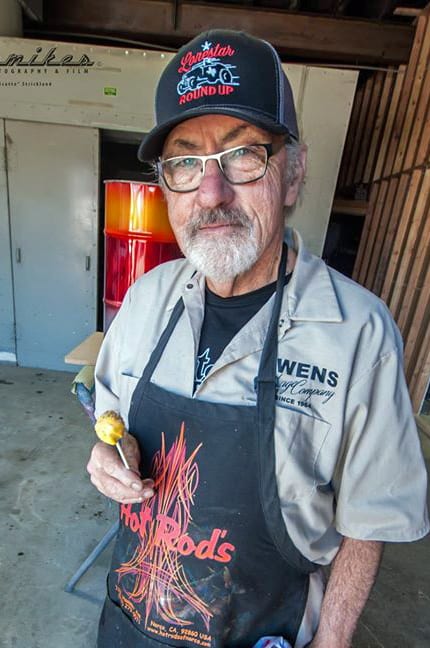
Roydon Powell was born in 1940 in the heart of Steinbeck country, Salinas, California. His dad – also named Roydon – earned his keep as a plastering contractor, with a special flair for custom sculpting. Dad was car guy, too. He drove a ’41 Lincoln with a Caddy motor, sort of a luxury car mix-and-match. Motorsports interested him, as well, and he took his young son to circle tracks, road races (on the famed 17-mile drive in Monterey, no less), and drag racing. He witnessed Don Garlits make his first West Coast run.
In high school, Rod endured the basics but thrived in the shop – wood, metal, and plastics. (Yes, plastic shop; Rod molded shift knobs!) His growing interest in cars made a dramatic turn at age 16 when his father took him to the fledgling Oakland Roadster Show. There he saw the legendary George Barris custom, the Ala Kart. It changed his life, he said. He was simply blown away.
Rod’s own car followed shortly thereafter, a 1939 Chevrolet Sedan. He immediately transformed the humdrum door-slammer by adding primer-yellow flames and contrasting red wheels.
If seeing the Ala Kart was a turning point, so was a chance meeting with one Don Varner. Varner was a local customizer of considerable talent; his pickup had been featured on the cover of Rod & Custom. (Varner would late win America’s Most Beautiful Roadster award.) Powell kept seeing the car around town, so he decided to pay Varner a visit.
“I’d never worked up the nerve to talk to these guys – it was sort of intimidating – but I walked in to meet Don,” Rod explained to Hot Rod magazine. “He’d do things like ask your opinion if he should do something
 a certain way. He was just a really nice guy.” Varner was equally taken by Powell’s enthusiasm and interest, tutoring him on the craft of customizing.
a certain way. He was just a really nice guy.” Varner was equally taken by Powell’s enthusiasm and interest, tutoring him on the craft of customizing.
After Powell’s ’39 was damaged in a fender-bender, he purchased a ’39 Chevy coupe. Many modifications ensued: a hot-rodded inline six with dual carbs and headers, a brilliant purple hue. And the stance? Well, “low” is an inadequate descriptor. Powell has also begun to customize cars for other people as well – with immediate effect. In 1959, Rod & Custom featured a stunning raspberry-and-pearl ’33 Ford coupe on which Powell had applied intricate scallops.
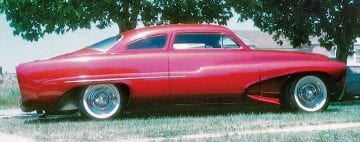
A string of personal cars followed, including a ’53 Buick and a ’51 Mercury, which was good enough to make the show-car circuit. During this period, the 1960s, Powell worked out of makeshift shops, including the body-shop classroom at the local community college, where he took classes. He also worked part-time at a used car lot, painting cars for $35 per. Later he dabbled in customizing motorcycles, adding a few Hell’s Angels to his client list.
By 1970, Rod Powell had opened up his own shop, focusing primarily on customs, including his own ’39 Ford coupe, which became a regular on the show-car circuit and, more importantly, a rolling ad for his talents. The 1970s also saw Powell customizing lowriders and vans. It was during this era he became close to Andy Southard, a renowned pinstriper, photographer, and author.
Soon the talents of Rod Powell caught the attention of the industry’s most significant players. NorCal legend Tom Prufer recruited Powell to apply flames on his hallmark track-nosed T, penned by equally legendary designer Tom Daniels. Autorama impresario Bob Larivee became a steady client as well, commissioning Powell to build cars for the show tour – including a custom van for “Charlie’s Angels.”
As customs began making a comeback in the 1980s, Rod was able to again focus on the types of cars that had originally enamored him. Powell and his team brought Ed Roth’s famous “Outlaw” back to life, as well as Gene Winfield’s “Jade Idol.” He also did work for NorCal custom enthusiasts like John D’Agostino and Richard Zocchi. Powell was powered by a relentless work ethic. He loved what he did. Eventually, though, the pace forced him to turn down the volume. “At one point I had 16 guys working for me,” he explained to Hot Rod. “We were doing top chops, painting cars, bodywork, and building things. I wanted to just paint.”
Looking to reset, Rod Powell moved north to Sebastopol, where he retreated to a small one-car studio and focused solely on pinstriping and flaming. “I’m really not a mechanic or a bodyman,” he told the Goodguys in a recent phone interview. “I consider myself an artist, and cars were my canvas.” After a few years, Powell retreated back to his Salina roots but still concentrated on the “art-side” of customizing, flaming and pinstriping.

Powell also had a strong friendship with Goodguys founder Gary Meadors, both members of the northern California hot rod community. In fact, Meadors commissioned Powell to apply scallops on his signature yellow Plymouth.
A still-active 79, these days Powell creates automotive drawings and cartoons on paint sticks, using colored pens. Why pens? Because all those years of dealing with lacquers and enamel fumes has triggered a paint-fume intolerance in his body, an occupational hazard one might say.
But the condition hasn’t tempered Powell’s enthusiasm for customs or having an opinion or two about the current state of automotive painting. For instance, he abhors modern basecoat-clearcoat paints; he feels they are artificially shiny and look too thick. “They’re awful,” he quips.
When asked what motivated him, he paused, and replied in the way any true artist would: “When I finished a paint job or a flame layout, I wanted others to like what I did. Simple at that.”

